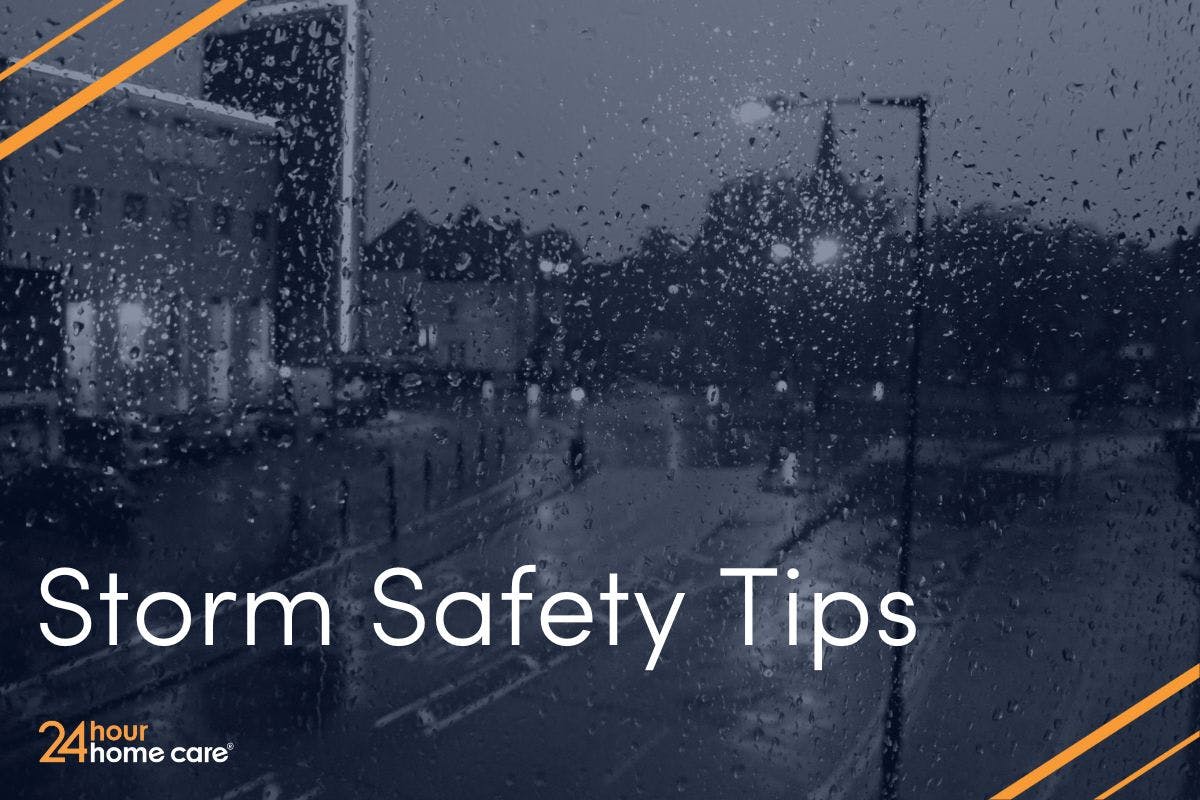Storm Safety Tips
Given the current state of winter, it's never too early or too late to prepare for rainstorms. Here are some of our favorite safety tips for before, during, and after a storm.

Storms are getting stronger and stronger. Given the current state of winter, it's never too early or too late to prepare for rainstorms. Here are some of our favorite safety tips for before, during, and after a storm.
Before the Storm
As the saying goes, you can never be too prepared. This is especially true when it comes to winter rainstorms. Rainwater can build up fast; you never know when some dirt will give way or that small stream will turn into a flash flood.
- Make an Emergency Plan – Sit down with your family and put together a plan. Make sure the plan is accessible to every member of your household. Also, don’t forget furry family members when making an emergency plan.
An emergency plan should include who to contact in case of an emergency, a safe place to meet, and roles and responsibilities for every member of the household. The government resource, ready.gov has a guide and template for creating an effective emergency plan. - Build an Emergency Safety Kit – In addition to a plan, every person in your household should have an emergency safety kit. Every emergency kit should have enough water and non-perishable food for three days, a first aid kit, a battery-powered radio, a flashlight, prescription medications, important documents, proper clothing for the weather conditions, and more. Refer to this list when putting together an emergency kit.
- Clean Gutters, Drains, and Downspouts – Most homeowners should clean their gutters, drains, and downspouts every six months. This is twofold. First, prepare your home for any rain. Mold can grow in organic debris and get into your roof tiles. Also, critters can nest in leaves, dirt, sticks, and other matter in your gutters. These critters can end up in your attic. Second, when there’s a backup of debris in your gutters, water can easily flood into your attic and cause major damage.
- Secure Trash and Other Debris – When a storm is on the horizon, it’s best to ensure any lawn furniture or other debris outside is secured and cannot blow away or cause damage. The same can be said for your trash cans. The last thing anyone wants to do after a storm is to retrieve their trash bins from down the block.
During the Storm
Stay somewhere you and your family are safe as the storm is happening. This is the time to get cozy and stay inside. Do not leave the house unless it is absolutely necessary to do so.
- When you Hear Thunder, Go Inside – If you are outside and hear thunder, it’s time to go in. Thunder means lightning might be close and it’s a good rule of thumb to be inside if there is any lightning around.
- Pay Attention to Alerts and Warnings – Sign up for emergency alerts before the storm. Many cities have their own reporting systems. You should also receive emergency alerts from your state. Monitor for alerts and do what they say.
- Be Prepared for Power Outages – Storms can cause power outages. Watch your phone, tablet, and watch batteries. Make sure they are fully charged and if possible, keep a portable power bank charged and ready.
After the Storm
The first thing you should do after a storm is to make sure everyone is ok. Reach out to members of your family and community to see if they are ok and check if they need help. Next, survey your home for any damage, but be careful. Follow our tips below.
- Do Not Move Any Debris – We all know storms can take down trees. If you see any debris in your yard that is heavy or in a precarious position, do not move it. Wait for a family member or friend to help. If anything is too big to move safely, call in the professionals.
- Do Not Drive Through Standing Water – From a distance standing water can look much shallower than it is. Do not drive into any standing water or flooded areas. It only takes 6 inches of water to reach the bottom of most passenger cars, and a foot of water can float any vehicle.
- Watch for Downed Wires – If you see a downed wire, do not touch it or go near it. Always assume a down wire is live and call 911 immediately to report it. Please do not touch anything that the wire has come in contact with, this includes cars, puddles, trees, and even people.
The best way to prevent a disaster is by staying prepared. Follow these simple tips, and you can breeze through some of the worst storms. Remember to always prioritize the safety of your family and community during big weather events. We hope you are all staying safe and warm during the storm.
